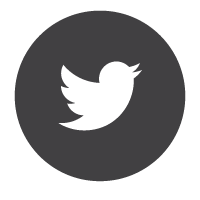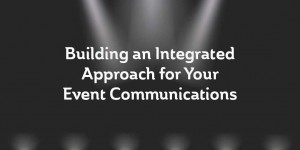Continuing on last week’s theme of reflection, we’re taking a look back at one of our favorite posts from this year. It’s important to always be thinking about what’s coming in the New Year, how we can improve our marketing and communications efforts as successful organizations, and what strategies can be adopted to move ourselves forward. And since the weather is pretty warm for December, we pulled a post from this past July and it’s all about being proactive with your planning and communications. Appeal Season 2015 may be coming to an end, but what’s up for Spring? How will you promote your gala or special event? How are you making sure you’re reaching the right audiences and targeting them with the most meaningful messaging? What happens when we’re proactive instead of reactive? Keep reading…
How many times have you been right up against an upcoming event and you say to yourself, “We’ve just gotta get something out about this now”? We’ve been there, and so have plenty of organizations. Chances are the last ditch mailer or postcard–which was thrown together in a rush–was sent off to some online printer and mailed to the used-most-recently database from somewhere in your files. We’ll go one step further and take a guess that you probably did some social media posts and fired off an e-mail blast or two to try and augment your efforts.
Pause.
This is reactive marketing at its “finest” and it’s no way to communicate with your audience. Now let’s jump to post-event. How many typos, omissions, or inconsistencies of message did you happen upon across all those haphazard communications? Was your board or direct supervisor displeased with the attendance? Maybe you didn’t raise as much money as you should have. All of these instances are the result of reactive marketing. Some companies plan out their content schedule months in advance, thinking through what they want to say and when the best time to say it is. Just because this might seem a little more advanced, doesn’t mean organizations and institutions can’t use this method to plan communications.
So what are some benefits to being proactive? Let’s take a look.
Time to Reflect and Adapt
This one is simple. More open time leaves you and your staff room to reflect and ask important questions. How will this mailing or social campaign benefit our organization? Will this help build relationships for future engagement? Can this inspire future content? Is this without purpose? Pushing out e-mails, tweets, or even blog posts just for the sake of doing it and without regularity doesn’t help you get better because it’s happening without meaning. Ask yourself: Why am I saying this (set your goals), how should I say it (use multiple channels), and what do I say (choose your topics)?
Room for Evaluation
With your communication schedule out of the way, there’s more time to measure the success of your efforts. Proactive marketers know exactly with whom they want to communicate and what the desired end-result is. You’re probably already measuring the success of your programs or activities—especially if they’re grant funded—so why not do the same for communications? For example, your goal might be to increase traffic to your website. With your schedule already planned, you’ll have time to research keywords and optimize your web copy so more people are driven to your site. You’ll also know how to target posts on social to reach the audience most likely to click through to your links. Now when you look at your traffic reports, you’ll have more ways to gauge whether or not you were successful.
Happier Audiences
Those that plan will avoid mistakes and free up valuable time for other tasks required to engage with your audience, like responding to inquiries and processing feedback. Having time for strategic listening allows us to address the needs of those in our network and helps to retain their loyalty because they feel acknowledged. Those that react often have to spend more time correcting errors or figuring out how to rebuild their audience since careless, erratic posts cost them followers. Reactive communications can often leave us feeling unconsidered or disconnected, which leads them elsewhere to find the information they’re looking for. Remember that time you filled out a survey for that e-newsletter you subscribed to, saying you’d like more of this and less of that? And you kept receiving more of the same? Exactly. How quickly did you hit that unsubscribe button?

Instead of working aimlessly, identify your goals and work backwards to achieve them. Having a well-considered plan can help you boost productivity, motivation, and reduce costs. Planning is the first step to being targeted with your messaging, integrated in your approach, and measurable with your results.
Like what you see? Stay in touch!
You Might Also Like:
+ The Case for Starting with “Why”
+ Keep Communications Afloat: The Battle Against Donor Attrition












